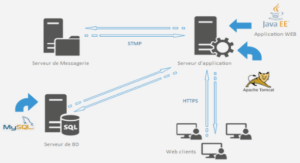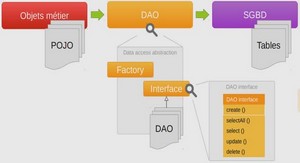Artificial Neural Networks (ANNs)
In this part of thesis, the ANNs models are used for characterizing and prioritizing the effective parameters affecting water consumption (WCP) in the three scenarios. The applied methodology is illustrated in figure 5.28. The neural network for identifier is designed as a three-layer neural network (input/ hidden/output layers). The neuron numbers in the hidden layers can be chosen depending on the practical training result. The training model adaptive neural network approach based on Back propagation algorithm is applied to assess household water consumption determinants. Dataset Input parameters: The three scenarios of parameters Output parameter: Water consumption Input parameters: Scenarios Scenario1 (S1): Socio-economic parameters Scenario2 (S2): Physical characteristics of housing units Scenario3 (S1+S2): Socioeconomic parameters + Physical characteristics of housing units Data selection in Matlab Software Training data size: (50%; 60%; 70% and 80%) Testing data size: (10%; 15%; 20% 25%) Validation Data size: (10%; 15%; 20% 25%) Preparation for training the neural network Network type: Multilayer perceptron (MLP) Rising the number of network training: 50 Select the best network result based on 5 performance criteria for each scenario Results obtained MES (mean square error) R (Correlation coefficient)
Input parameters
It is expected that the sensitivity of WCP differs accordingly to the considered input parameters, and this mainly because the variation of correlation strength between WCP and each parameter (Part 01 of Chapter 05). Data initialization Before creating the input vectors and output vector, the data must be in normalized form. This step in modelling aims to convert the input and output values into representative range of values for the computation using ANNs. It was applied already in the previous Chapter 03. As mentioned in part I of this chapter, the total selected variables (explanatory variables) are 12 that are categorized into three scenarios. in the current work, the back-propagation feed-forward MLP with sigmoidal-type activation function (equation 5.1) thanks to its popularity and mostly high performance compared to other networks (Lippmann, 1987). (5.1) Performance function are one of the important factors affects the learning performance. For feed forward network, “Mean Square Error (MSE)” is commonly used performance function. This last calculate the cumulative values between the target outputs values and created outputs by the network. (5.2) Where; e (t) is forecast error at period t, n is number of periods (Agami et al., 2009) a. Scenario1 (S1) The target output Water Consumption (WCP) can be considered as a function of: household size (HOUS), number of female (FEM), monthly income (INC), two age categories (AG1 and AG3), three categories of education level (PRS, HGS & UNIV) and car numbers (CARN). The MLP network can be expressed by: WCP= f (HOUS, FEM, INC, AG1, AG3, PRS, HGS, UNIV, CARN) (5.3) AG2 AG4 MAL MDS are removed from further analysis because of their week correlation to WCP. Removing such inputs would improve the process and reduces the time. b. Scenario2 (S2) Scenario 2 represents the explanatory variables of physical characteristics of housing units. In this scenario, WCP is considered a function of the following parameters: total area of the house (TAR), building area (BAR) and number of rooms (NROM). The MLP network can be expressed by: z f z 1 exp 1 ( ) n i e t n MSE 1 2 ( ) 1 Chapter 05: Results and discussion Part II 125 WCP= f (TAR, BAR, NROM) (5.4) Also, because of their week impact on WCP, Garden area (GAR) and watering frequency (GWAT) are no more taken into consideration. c. Scenario3 (S1+S2) To confirm the sensibility of WCP to number of inputs, all the factors are considered in this scenario. This scenario is a combination between the first and the second scenarios where the total explanatory variables are 12 parameters. The MLP network can be expressed by the following function: WCP= f (HOUS, FEM, INC, AG1, AG3, PRS, HGS, UNIV, CARN, TAR, BAR, NROM) (5.5)
Training, testing and validating the neural networks
The neural network models are trained to learn the forward dynamics of water consumption. 12 inputs and one output (WCP) are selected as the identifier model.
1. Scenario1:
Models architectures and their performances Results in table 5.23 shows the four selected models for the first scenario. Also, the training, testing and validation “MSE” and the training, testing and validation “R”.





